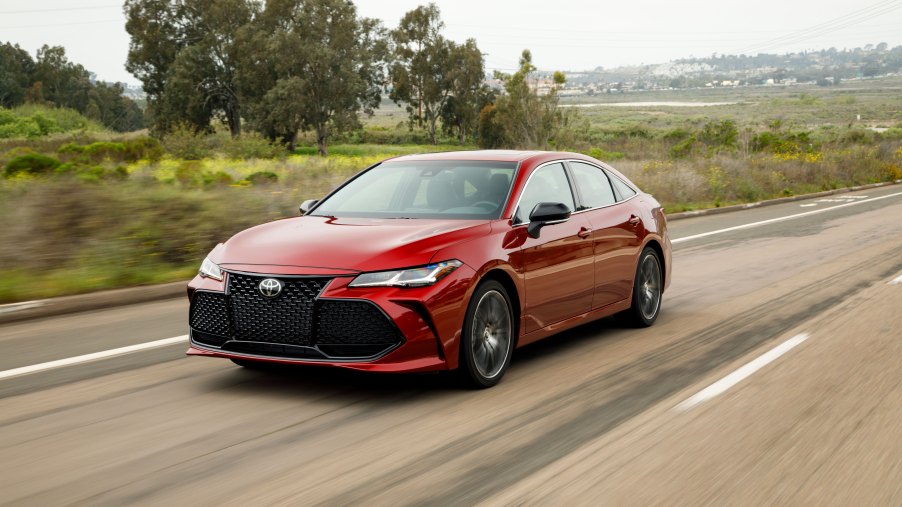
Is Toyota Trying to Get Rid of Its Boring Image With the Avalon TRD?
Although Toyota enjoys a reputation as a maker of solid and reliable cars, the company’s image isn’t exactly one of excitement. Especially considering some of its past highlights, like the Celica GT4. But Toyota seems to be actively looking to change that perception. The 86 sports car is getting an update, and Toyota’s TRD division has already upgraded the Camry sedan. And now, the Avalon is next to receive the treatment. But is the Toyota Avalon TRD genuinely fun to drive? Doug Demuro attempted to find out.
Toyota Avalon TRD vs. standard car
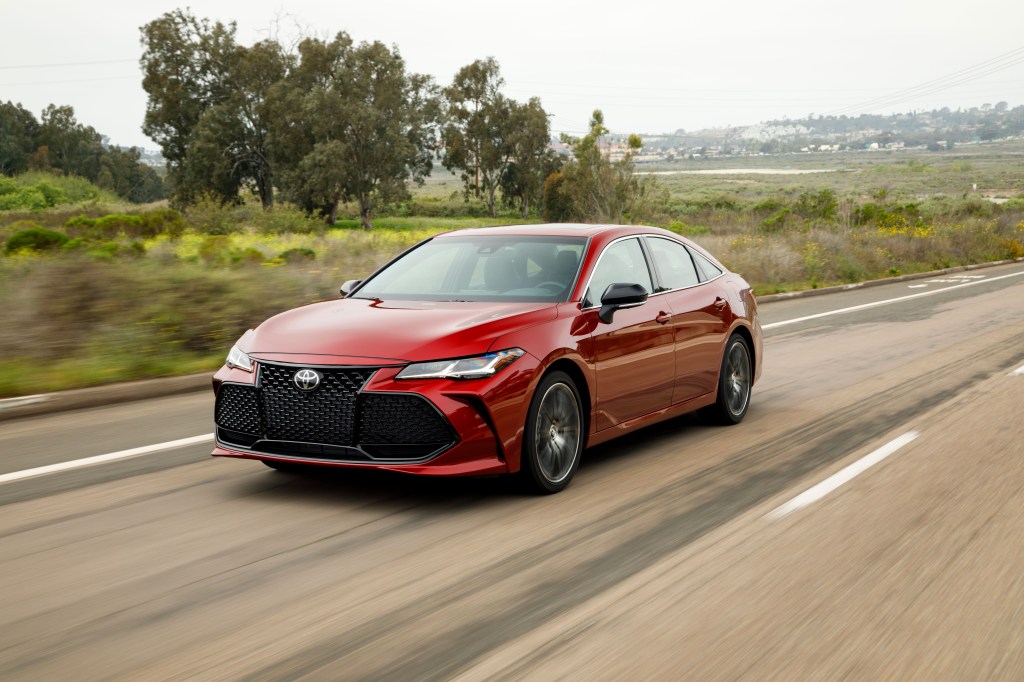
At least on paper, the Toyota Avalon TRD is more in line with BMW’s M Performance cars, not just M Sport ones. That is to say, as with Toyota’s TRD SUVs, the modifications aren’t just skin deep.
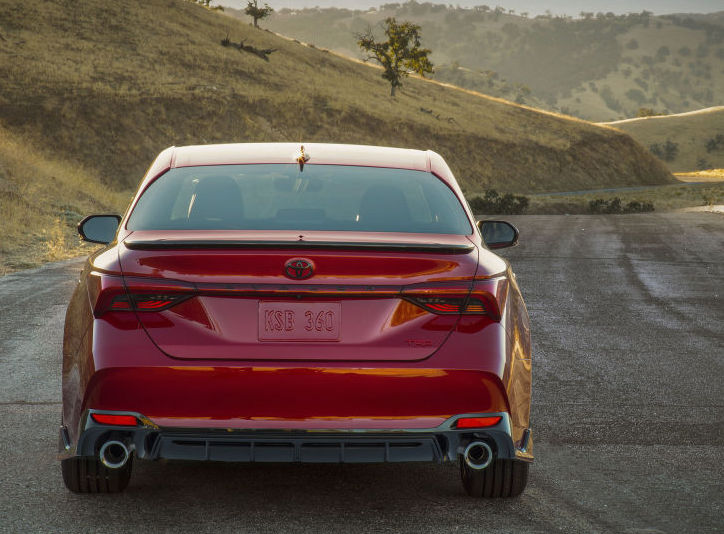
Toyota didn’t touch the Avalon’s 3.5-liter V6, Car and Driver reports, though it does get a dual-outlet sports exhaust. It still makes 301 hp and 267 lb-ft and is still hooked up to an 8-speed automatic. That V6 also means the Avalon TRD doesn’t get the sedan’s new all-wheel-drive system. Instead, Toyota’s TRD division focused on improving the sedan’s handling.
The TRD trim is based on the Avalon Touring, Motor Trend reports. But, instead of the Touring’s electronically-controlled suspension, the TRD receives new stiffer steel springs and shocks, and a ride lowered by 0.6”. To help prevent bottoming-out, the sedan also gets new bump stops.
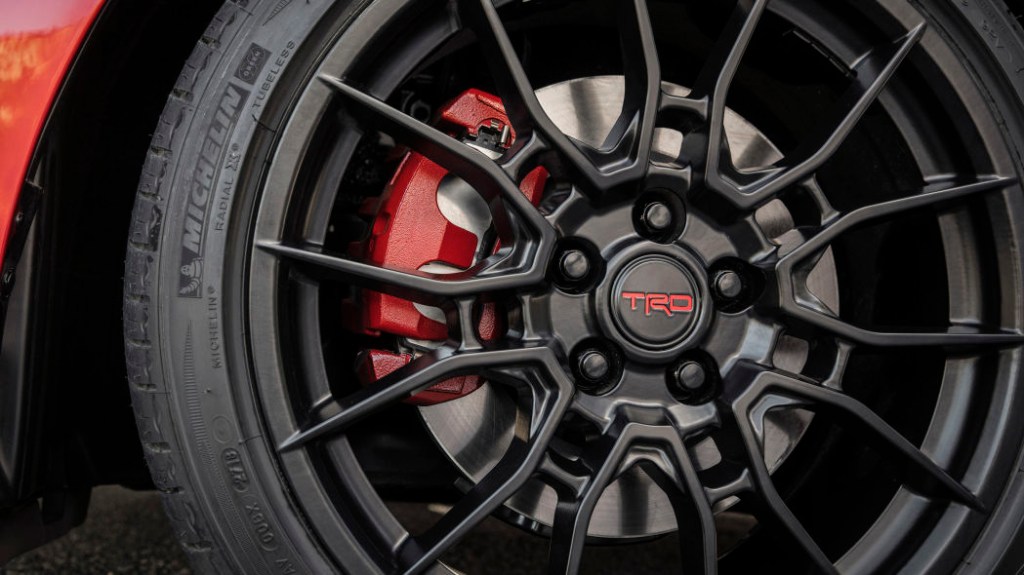
The Toyota Avalon TRD also receives new dual-piston front brake calipers, larger front rotors, and a front differential that offers brake-based torque-vectoring. In addition, Car and Driver reports the Avalon TRD is fitted with stronger underbody bracers, stiffer anti-roll bars, as well as lighter wheels.
Outside, the Toyota Avalon TRD gets a kind of factory body kit. There’s a front air splitter, a rear diffuser, side skirts, and trunk-lid spoiler. Inside, the sedan gets a TRD shift knob, as well as TRD trunk mats and floor mats. There’s red contrast stitching on the seats, red seatbelts, and aluminum pedals. The seats also get some grippy Ultrasuede inserts.
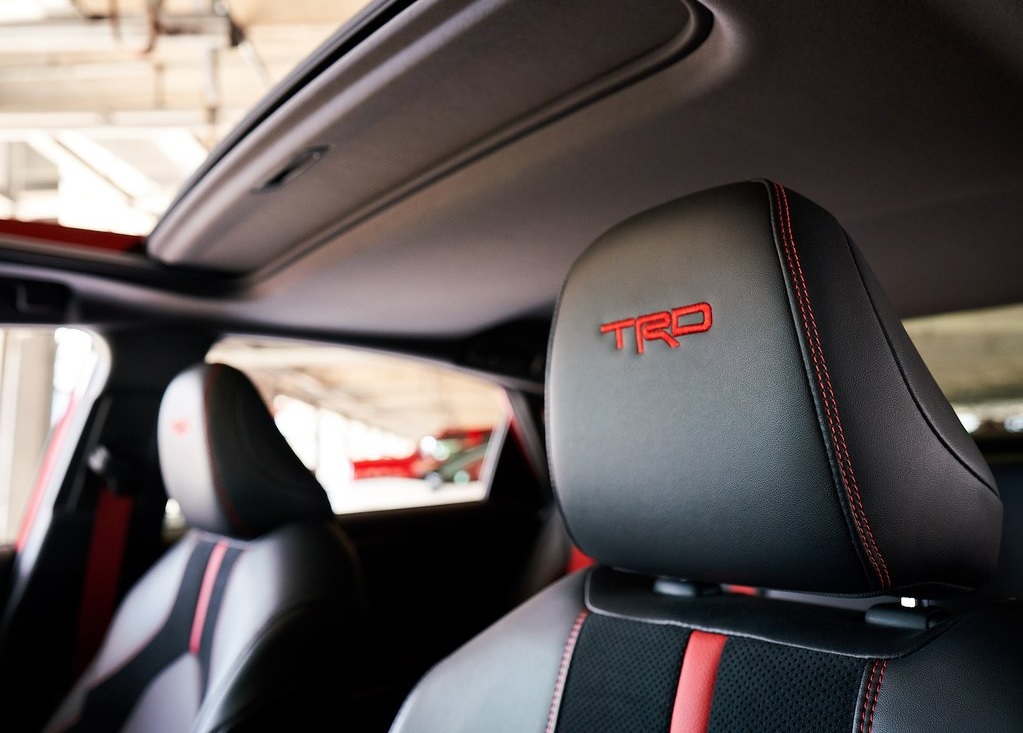
Interestingly, although the Avalon TRD is based on the Touring model, it’s equipped more like the XSE, Motor Trend reports. So, while it has adaptive cruise control and blind-spot monitoring, it lacks features like the heated steering wheel and rear seats.
Driving the Toyota Avalon TRD
As Demuro explains, the standard Avalon is something of a budget Lexus. It’s therefore interesting that Toyota decided to make a TRD version. Unfortunately, it doesn’t seem to make much of a difference over the standard model.
On the road, Demuro appreciates the sedan’s comfortable ride, as well as its quiet and roomy interior. However, he doesn’t find the Avalon TRD to be any sportier than the standard sedan. The steering is still slow, and although the car’s Sport Mode does improve throttle response, the TRD is no faster than the standard Avalon. MT and Motor1 report similar findings. The Toyota Avalon TRD’s handling is slightly better than the normal car, but this car isn’t a sports sedan.
Vs. the competition
The Toyota Avalon TRD starts at $42,375; that’s only $200 less than the Touring. And actually, MT found the Touring’s adaptive suspension was actually more impressive in terms of handling. The TRD’s stiffer suspension made it harder to put the V6’s power down, and it rolled more. In addition, the Avalon TRD’s competitors have more to offer.
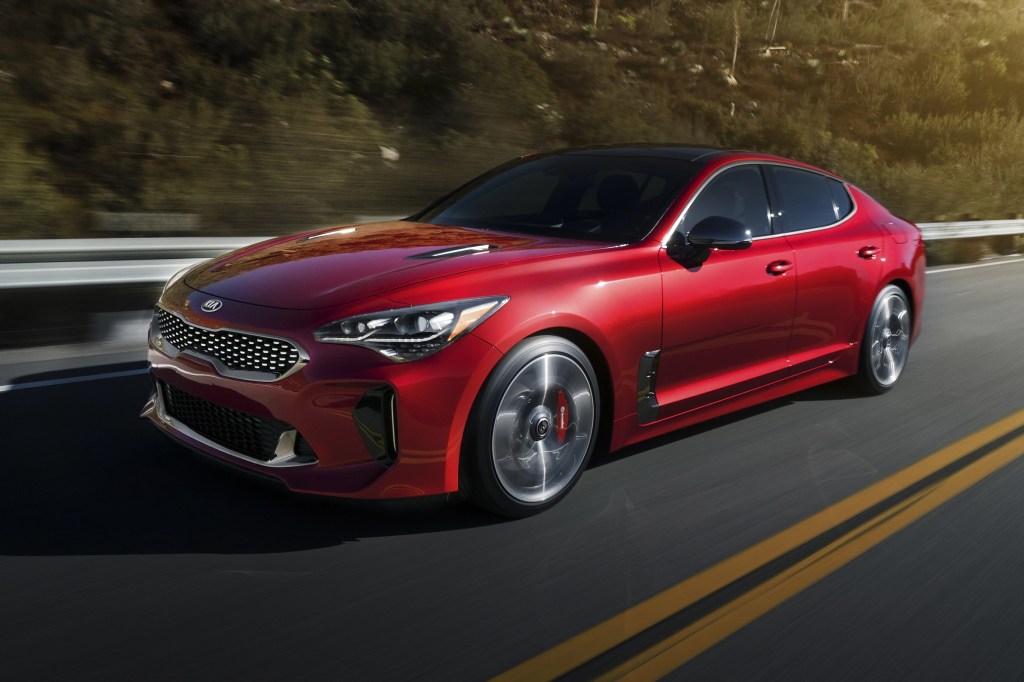
The Kia Stinger GT, for example, has a 365-hp 3.3-liter twin-turbocharged V6. It’s also rear-wheel drive, with a standard limited-slip differential. It’s also cheaper, with a $39,500 starting price.
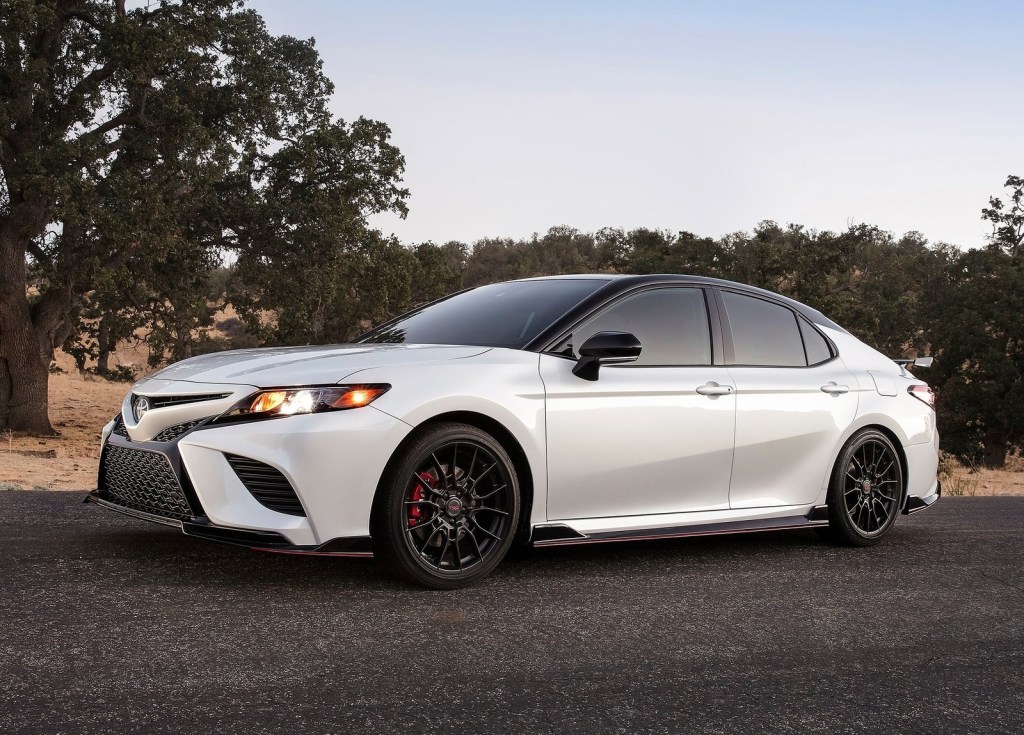
There’s also the smaller Toyota Camry TRD. It has the same 301-hp V6, and similar chassis and suspension modifications. However, Car and Driver reports the TRD treatment is more apparent in the smaller sedan. It’s also genuinely quick. Although the Avalon is more comfortable, MT reports, if a livelier driving experience is the goal, the Camry does it better. It’s also about $11,000 cheaper.
Here’s hoping Toyota’s next sporty sedan goes a little further than the Avalon TRD does.
Follow more updates from MotorBiscuit on our Facebook page.


